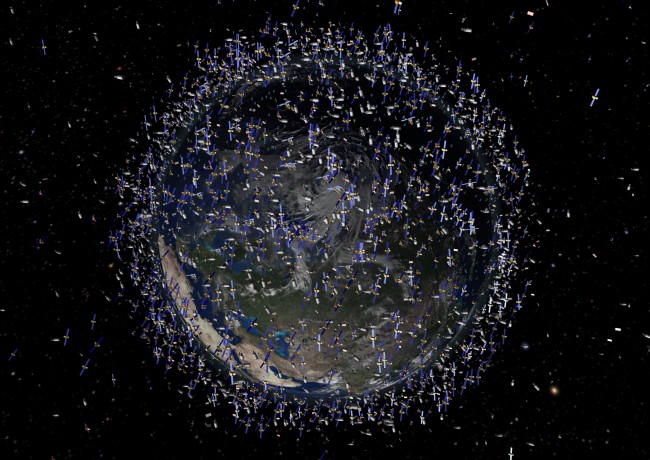Satellites and Orbital Mechanics
Satellites have become an important part of our lives. There are over 1,000 operational satellites in orbit (according to Universe Today’s “How Many Satellites are in Space?”), with duties that include communications, navigation, weather, TV broadcasting and scientific research/exploration.
It’s amazing to think the main principles behind some of our most important and technological advances are all thanks to Kepler and Newton, two guys from time periods that were so technologically challenged they most likely didn’t have indoor plumbing!
These principles and their applications are the subject of my Orbital Mechanics class I am currently taking, taught by Professor Ming Zhang at Florida Tech.
One of the most important things about orbital mechanics is the shape of the orbit. A natural orbit will take what we call a conic shape, which means one of these four: circular, elliptical, parabolic or hyperbolic.
These are basically determined by the amount of total energy, kinetic and potential combined. The kinetic energy comes from the motion of the satellite as it moves in its orbit, while the potential energy comes from Earth’s gravity keeping it in the orbit. A negative total energy means the potential energy is winning and the satellite is stuck in either a circular or elliptical orbit. A positive energy means the kinetic energy wins and the satellite escapes from orbit. Depending on what the satellite is being used for makes this detail very important. If the satellite is going into orbit as a TV broadcasting unit, it would be very bad to have it fly off into space. Inversely, if the satellite is supposed to take close-up photos of Jupiter, it will be quite useless stuck in Earth’s orbit.


We discussed in class the importance of getting the right energy, which translates into how fast you make the satellite go, determining how much fuel you need. The big problem: more fuel equals more money. We’re talking millions of dollars to send one small, unmanned satellite into space! So every bit of fuel counts, and any way to save on it will help reduce costs.
Professor Zhang used the example of the Ulysses space craft, launched to get observations of the polar regions of the sun. In order to do this, Ulysses needed to escape the plane of the Solar System. This is shown in the diagram below. Notice the Earth and sun are orbiting in one direction (aka the plane of the Solar System) while Ulysses is orbiting nearly perpendicular to it (80 degrees, to be exact). A lot of energy is needed to accomplish this, and we actually do not have a launch vehicle capable of producing the required orbit from Earth.
So instead, the spacecraft was sent to Jupiter first. Weird, right? It sounds a bit ridiculous at first, sending a spacecraft to take pictures of the sun by first sending it in the wrong direction. It would be like taking a flight from New York to Beijing to reach your original destination of London. But Jupiter is the second largest object in our Solar System. By using its gravity, we were able to slingshot Ulysses into the orbital path shown below, allowing never-before-seen images of the sun’s poles, among other experiments. Going to Jupiter, while longer, saved energy and therefore fuel and money, both of which have to be considered when launching things to space.

So far, the Orbital Mechanics class has been very interesting, and I expect it to get even more so as we learn about more applications. We have some chapters coming up titled “Ballistic Missile Trajectories,” “Lunar Trajectories” and “Interplanetary Trajectories” that I am looking forward to. Orbital capabilities have changed the way we live, and they’ll continue to do so. I am glad to be learning about such an important aspect of our technological advances.





